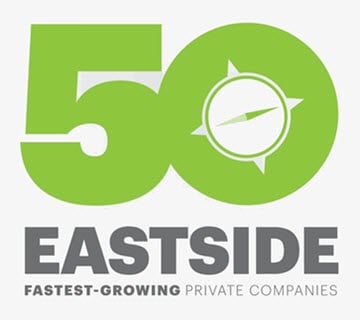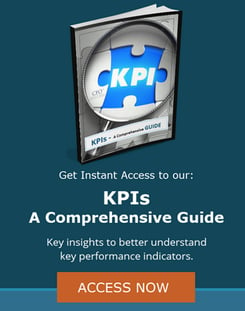(4).jpeg?width=721&name=Does-our-Not-for-Profit-need--a-501(c)(4).jpeg)
There are 1.2 million public charities in the United States. Public charities are only one of 29 types of nonprofit organizations recognized by the tax code. Next in popularity to public charities are social welfare organizations (501(c)(4)--at last count, there were over 82,000.
In a world where everything seems to be politicized, it is no surprise that many not-for-profits are entering the political arena more and more. And while 501(c)(3) Public Charities can engage in advocacy efforts in generous ways, some organizations may be frustrated by the allowable activities, prompting them to form a 501(c)(4) – a specific type of not-for-profit organized to promote social welfare.
Internal Revenue Code section 501(c)(4) provides for the exemption of two different types of organizations with their own distinct qualification requirements. They include:
Social welfare organizations: Civic leagues or organizations not organized for profit but operated exclusively for the promotion of social welfare.
Forming a new entity and maintaining proper segregation between a 501(c)(3) and a 501(c)(4) is complicated and potentially expensive. So does your not-for-profit need a separate 501(c)(4) to carry out its political aspirations?
If so, what else should you consider?
What are the political activities differences between a Public Charities 501(c)(3) and a 501(c)(4)?
- 501(c)(3) may engage in direct and grassroots lobbying in a limited capacity (see more below). Lobbying is defined as activities that attempt to influence specific legislation.
- 501(c)(3) may NOT engage in political campaign activity – intervening in a campaign for or against a candidate for public office. Ex. Rating, promoting, or contributing to a candidate.
- 501(c)(4) may engage in unlimited direct and grassroots lobbying
- 501(c)(4) may engage in political campaign activity, but it cannot be its primary purpose.
- 501(c)(3) may engage in endless activities that do not attempt to persuade legislators or constituencies of legislators to enact or not enact specific legislation. Ex. Voter education, get-out-the-vote efforts, and non-partisan voter guides or candidate debates.
How much lobbying can a Public Charities 501(c)(3) perform?
As mentioned above, a Public Charity 501(c)(3) may engage in direct and grassroots lobbying as long as these activities are limited. How much lobbying depends on a default 'no substantial part' test vs. an optional 501(h) expenditure test.
While the IRS has not defined the term "no substantial part" of a charities' activities, a common general guideline is 3-5% of its overall activities.
Alternatively, the 501(c)(3) may elect to measure their lobbying activities under IRC Section 501(h). The amount of allowable lobbying activities is much more generous and calculated on a sliding scale based on the size of the 501(c)(3) annual expenditures. See https://www.irs.gov/charities-non-profits/measuring-lobbying-activity-expenditure-test
Why would an existing Public Charities 501(c)(3) want to set up a 501(c)(4)?
There are at least two simple reasons:
- The organization wants to engage in more lobbying activities than allowed, even if it already utilizes the 501(h) election mentioned above. The 501(c)(4) organization can engage in unlimited lobbying efforts.
- The organization wants to engage in political campaign activities – campaigning for or against a public office candidate. The 501(c)(4) would then be allowed to carry out activities such as:
- Distribute voter guides that compare candidates on issues important to the organization
- Endorse candidates
- Post political messages on social media
- Many other activities, some of which are unique to federal and state law
Operating a 501(c)(4) with an affiliated 501(c)(3)
For 501(c)(3) organizations looking to establish an affiliated 501(c)(4), multiple steps and issues must be taken into consideration not to jeopardize their tax-exempt status. Here are just a few to consider:
- The 501(c)(3) may not subsidize, in any way, the efforts of the affiliated 501(c)(4). If this guideline is considered at every step of setup and operation, you'll be heading in the right direction. Additionally, facts alone may not be enough. Appearance also matters.
- The new 501(c)(4) is a separate legal entity – board of directors, bylaws, EINs, tax filings, etc.
- Shared expenses are common and must be carefully considered. Shared employees (wages, benefits), office space, software, administrative support costs, and many other costs must be attributed to the correct organization. The most common approach to address shared expenses is a cost-sharing agreement that details how expenses will be measured, allocated, and ultimately paid/reimbursed between organizations.
- Shared employees must track records that document the amount of time spent on behalf of both organizations. One organization may act as the payroll processor and seek reimbursement from the other for the shared employees' costs. A portion of the payroll processing costs should also be allocated to the other organization, likely as agreed per the cost-sharing agreement noted above.
- The two organizations must maintain separate financial records, including bank accounts, accounting ledgers, filing systems, tax returns, etc.
- The two organizations should strongly consider operating two separate websites and should be cautious about providing links from the 501(c)(3) site to the 501(c)(4) site.
- If the 501(c)(4) directs funds to the 501(c)(3), there are very few restrictions, if any. The 501(c)(3) would still need to track any lobbying activities.
- On the flip side, there are many restrictions on funding from the 501(c)(3) to the 501(c)(4). Usually, this would take the form of a grant and should be documented with a grant agreement. The agreement should be specific to the funding's purpose and set parameters around lobbying and explicitly prohibit political campaign activity. Loans can also be issued, but this too comes with restrictions and should be documented with a loan agreement and assigned a market interest rate. Generally, it's best to avoid granting or loaning funds from the 501(c)(3) to the 501(c)(4).
If it sounds like safely operating an affiliated 501(c)(4) is complex or comes with extensive rules, you would be correct. An existing Public Charity 501(c)(3) organization should carefully consider whether it can engage in political activities within the (c)(3) parameters discussed here or whether a new 501(c)(4) organization is needed.
Due to the complexity, it is highly recommended to hire professional legal advice. CFO Selections is available to help implement processes and procedures necessary for a new affiliated 501(c)(4). If you need assistance, please contact us!
About the Author
 Todd Kimball is a Partner with CFO Selections and leads the non-profit practice in Oregon and SW Washington. He is also the Accounting Solutions Partners practice leader in Oregon and SW Washington.
Todd Kimball is a Partner with CFO Selections and leads the non-profit practice in Oregon and SW Washington. He is also the Accounting Solutions Partners practice leader in Oregon and SW Washington.
Todd is a senior accounting professional with over 15 years of expertise in the non-profit and government sectors. He has a proven track record at tackling the most challenging not-for-profit accounting issues and finding solutions that work and move organizations forward. He excels at creating process efficiencies, motivating and utilizing staff to their full potential, implementing internal controls and providing sound technical expertise. Learn more about Todd here.





